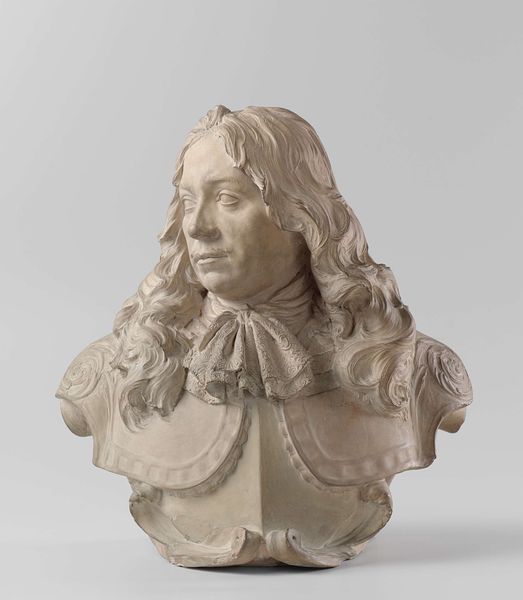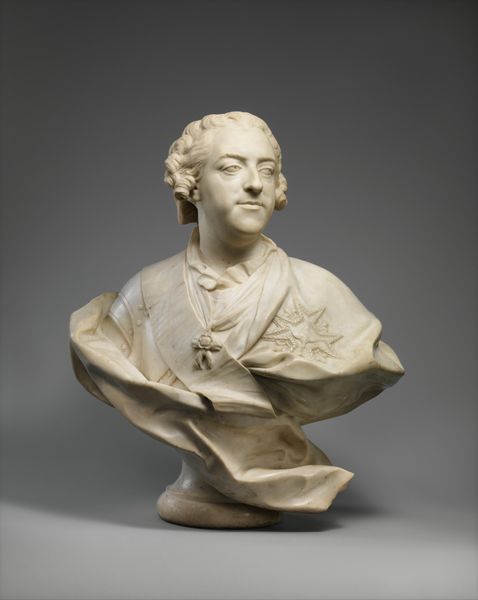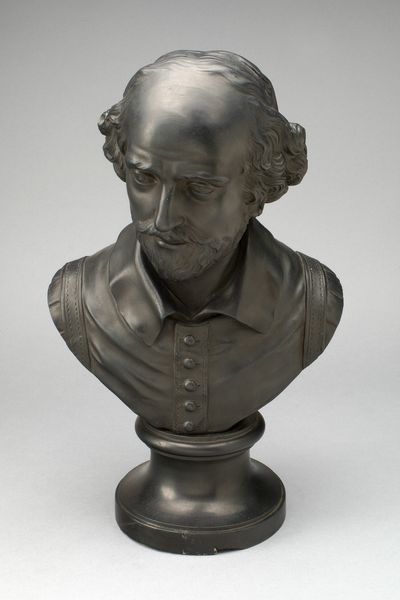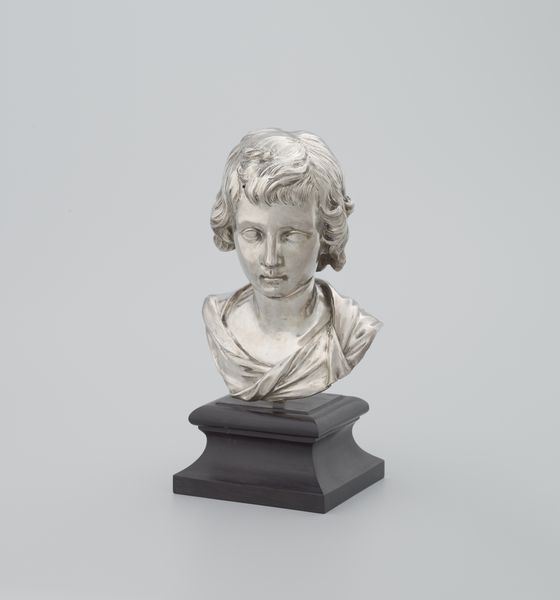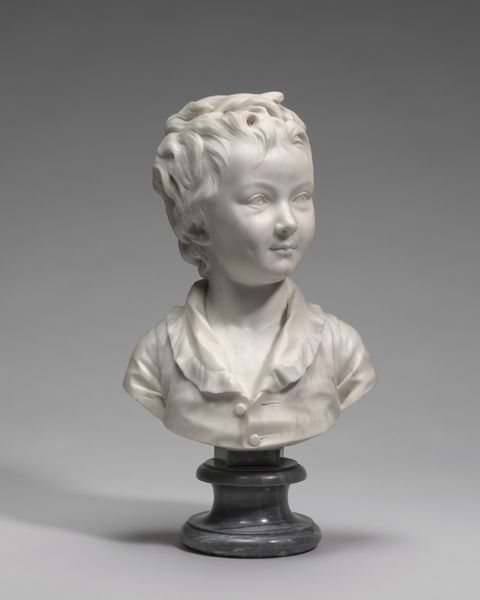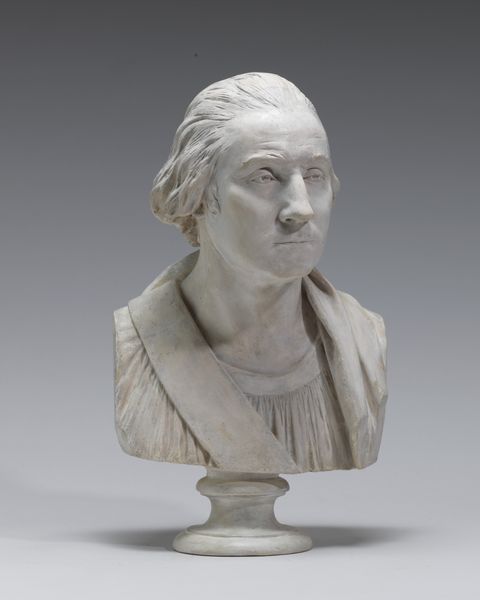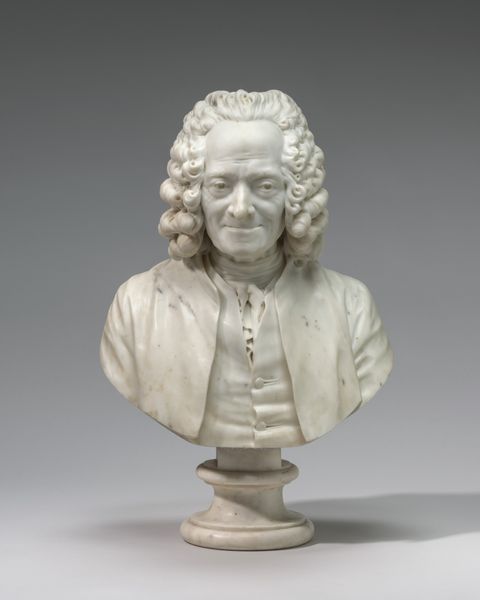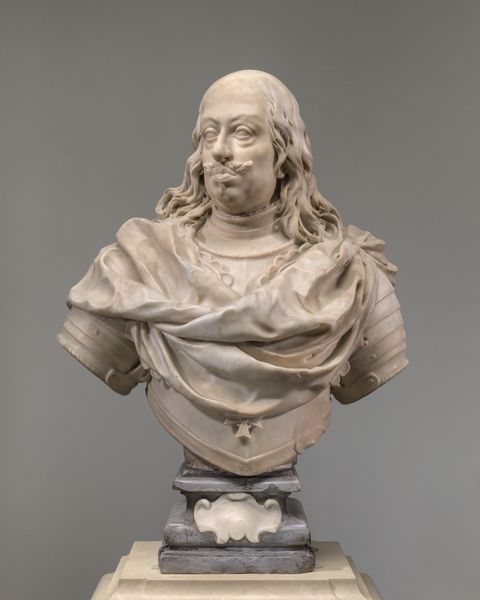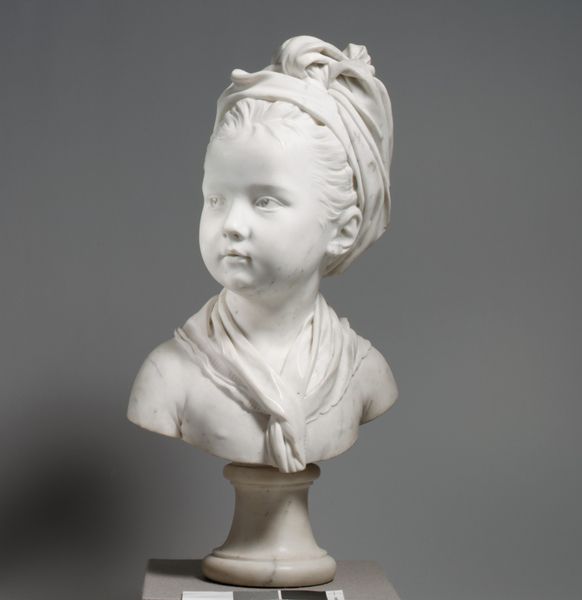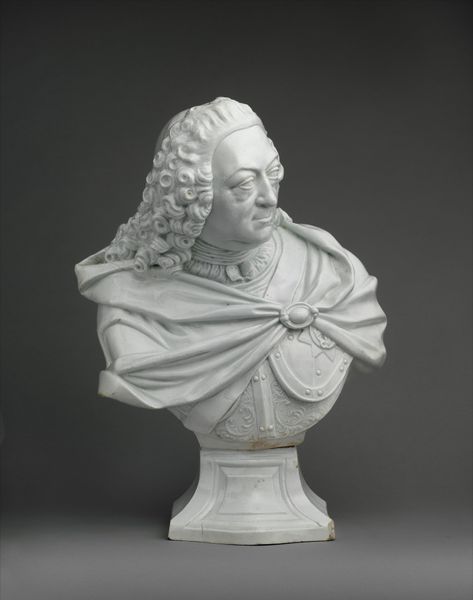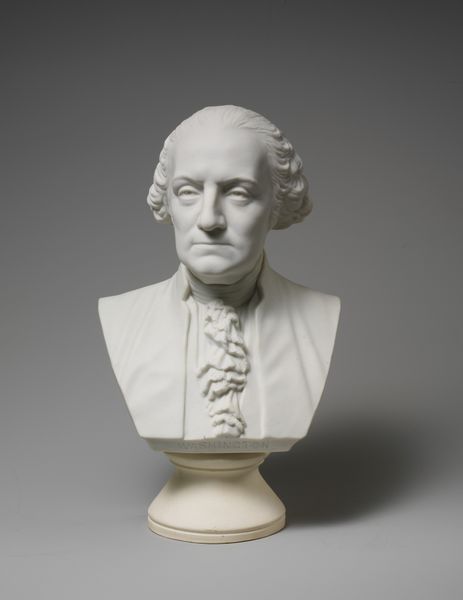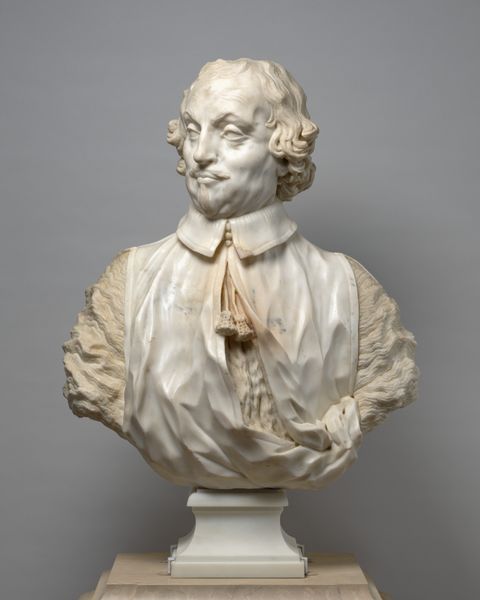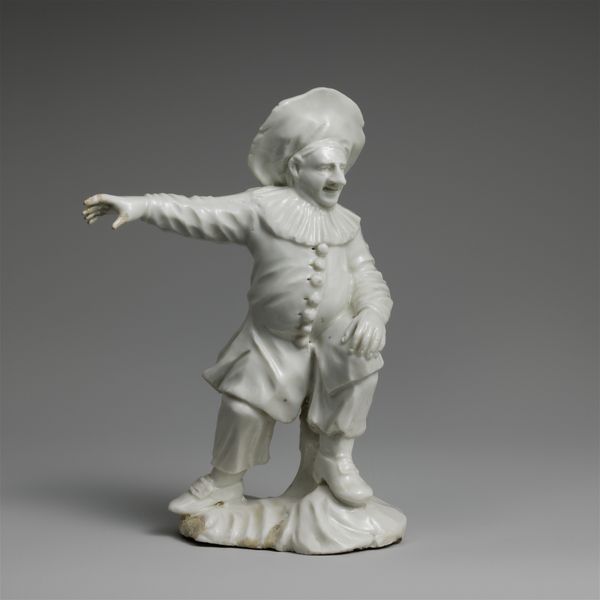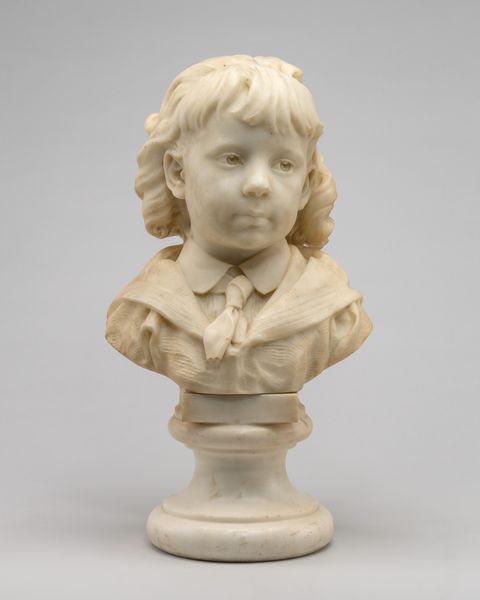
sculpture, marble
#
portrait
#
baroque
#
sculpture
#
sculpture
#
decorative-art
#
marble
Dimensions: Overall (confirmed): 17 × 12 1/8 × 9 1/8 in. (43.2 × 30.8 × 23.2 cm)
Copyright: Public Domain
Curator: Here we have "John Barnard," a marble bust sculpted in 1744 by John Michael Rysbrack, currently residing at the Metropolitan Museum of Art. Editor: My initial impression is one of reserved melancholy. The child’s gaze is downcast, and the stiff formality of the ruffled collar seems almost suffocating. Curator: Indeed. Rysbrack was known for his skill in capturing textures and likenesses, particularly in marble. The rendering of the fabric—the fine details of the lace, the buttons—all speak to the level of craftsmanship and the labor invested. One wonders about the conditions under which such meticulous work was created, the artisanal practices involved in marble carving at the time. Editor: Absolutely. The choice of marble itself contributes to the symbolic weight of the piece. Marble, with its associations of antiquity and permanence, elevates this child portrait to something beyond a simple depiction of a young boy. It’s an effort to capture something lasting about him. Curator: Considering its baroque aesthetic, it highlights how such elaborate attire speaks to wealth and status, it represents not only family identity, but consumption, highlighting how social and economical systems influence artistic work. Editor: The gaze does indeed hold cultural weight; beyond a mere representation of his features, it evokes vulnerability and seriousness beyond his years. It is as if, already as a child, he bears the expectations of his class. The somber expression is powerful. Curator: Well, for me, tracing Rysbrack's techniques offers clues about production practices. Who else contributed their labor to produce such beautiful bust? Editor: It brings forth the idea that portraiture serves the important purpose of shaping identities for those living through Baroque aesthetics and values. How does an image continue to communicate memory through this bust? Curator: The way this bust came into being holds meaning. Appreciating the labor brings an insight into art consumption back then, and helps recognize systems that support today's art world as well. Editor: And on the other hand, observing its iconographic content will unveil the subject’s presence as it echoes through the years.
Comments
No comments
Be the first to comment and join the conversation on the ultimate creative platform.
